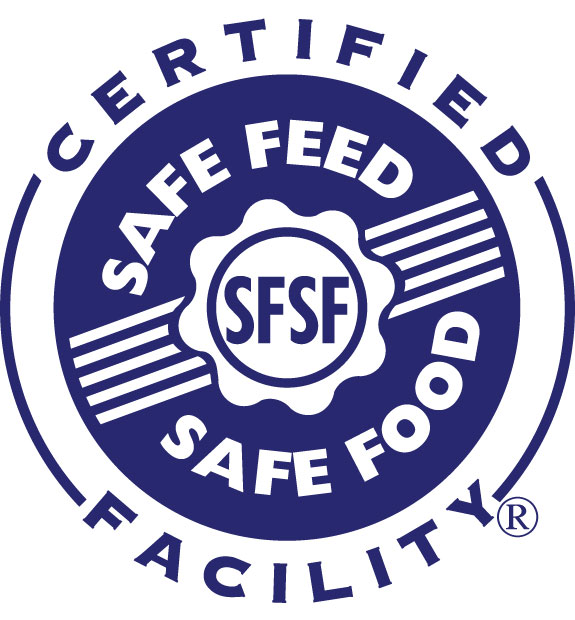Each day over 50,000 producers in this country go about their business producing the safe, nutritious and affordable dairy products that consumers enjoy. In our society, we expect perfection when it comes to food safety. A food safety breach can be devastating to an individual consumer and catastrophic for an industry.

Contamination and recalls of products like peanut butter, spinach, tomatoes, ground beef and melamine-contaminated pet foods gives ample evidence of what is potentially at stake for any food commodity. The global marketplace we live in also makes consumers less trustful of the food they consume.
There are a lot of safeguards built into our dairy industry to ensure the safety of milk – from production through processing and distribution. But as a producer you are on the frontline. A tremendous responsibility to produce a flawless product sits on your shoulders every single day. However, it should be a responsibility shared with all of your industry partners. In your efforts to produce a safe milk supply, what do you expect of your feed supplier? A feed manufacturer is generally the largest supplier to a dairy operation. The product that it supplies is directly consumed by your dairy herd – a critical link in your food safety program.
Working with your feed supplier
There are some issues or questions that you should keep in mind, or ask, if you are a dairy producer.
Inspect the delivery truck. Look closely at the first product out of the truck. Is the delivery firm properly flushing out the feed from the last delivery to ensure your product is free of contamination? Is the delivery truck reasonably clean?
Look at the paperwork. Make sure the correct product is being delivered to the proper bin or commodity bay. If you have multiple bins on your premises, are they adequately labeled? Can the driver – either your regular driver or a substitute driver on his first delivery to your farm – easily identify what goes where without any confusion? Each delivery is required to be accompanied by a feed tag or list of ingredients that were blended. Federal regulations introduced in response to the threat of BSE require that you keep these labels in the event a traceback of feed sources is ever required.
Is your feed supplier taking all biosecurity precautions? Company representatives should wear clean boots when they are in the barns. Feed deliveries should be made at a location where any contact with cattle or manure is avoided. Are you doing everything possible to help your feed supplier maintain biosecurity on your farm?
Visit with your feed supplier about the source of ingredients used and the procedures in place to monitor product quality. Does the supplier have a list of approved vendors? What controls are in place in the manufacturing plant to prevent a mixing error? Are production sheets checked? Are samples ever submitted to a laboratory to verify the nutrient content of either ingredients or finished products? These are all questions that will help assure you that your feed supplier is doing everything possible to provide you with a safe product.
Traceability is the foundation of a modern quality control system. It starts with animal identification, but from a feed perspective, it means tracking all lot codes throughout the manufacturing cycle. You may have noticed in the past few years that more feed invoices or delivery receipts include the lot codes. This is evidence your feed supplier is maintaining the appropriate records so that, in the event of a feed safety problem, all affected product can be tracked down. If you have questions about this, ask your feed supplier.
Safe Feed/Safe Food Certification Program
Ask what your feed supplier is doing to demonstrate a commitment to food safety. Ask if the manufacturing facility is inspected by a third party to evaluate all procedures. Consumers and retailers like the concept of third-party auditing or verification to help ensure compliance with the standards of the industry.
In the last few years, many feed companies have sought and achieved certification from the Safe Feed/Safe Food Certification Program. This program, administered by the American Feed Industry Association, includes about 360 feed facilities in the U.S. and Canada. Becoming certified involves an on-site inspection by a trained professional certifying agent who investigates all of the internal procedures, training, record-keeping, etc. at a feed facility. Plants are audited every two years to maintain the certification.
You may see some feed companies using the Safe Feed/Safe Food logo as evidence of participation. Some firms use other comparable processes to achieve this same goal. Ask your feed supplier about the steps taken at the particular plant servicing your dairy. Make sure you are comfortable with the response.
Consumers are more aware and concerned about their food choices than ever before. If we are to maintain consumer confidence in the dairy products we produce, our industry must utilize the best management practices that help assure a safe food product. Those practices extend beyond the farm-gate to your suppliers and feed industry partners. PD

-
Al Schultz
- Vice President
- Technical Services
- Vita Plus
- Email Al Schultz





